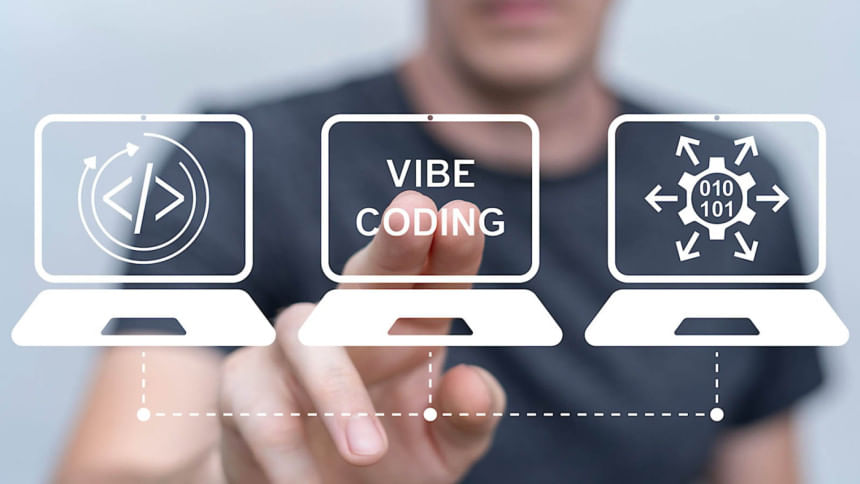Vibe Coding: How it could accelerate AI adoption and AI education in the AI gold rush era

Learning in the Fast Lane of AI
In July and again in September, I joined two Vibe Coding Hackathons hosted by AGI Ventures Canada in Ottawa, Canada. Each event gathered hundreds of developers, entrepreneurs, and AI enthusiasts, all racing to turn ideas into web-based prototypes. The hum of laptops and the glow of monitors told a bigger story: the rise of a new way to learn about artificial intelligence, not through lectures or labs, but through hands-on experimentation.
The Gold Rush and the New Coders
As AI enters its "gold rush" era, vibe coding offers a realistic entry point for tech learners and builders alike. AI is today's California gold rush. Every AI startup is equivalent to the gold prospectors, miners, and quality inspectors, or any other professional who wanted to make it big during the gold rush. Yet, amid the frenzy, many professionals still struggle to understand how AI tools really work. Vibecoding hackathons fill that gap. By immersing participants in live problem-solving scenarios, and forming cross-disciplinary teams, it transforms curiosity into competence. Developers don't just read about machine learning or no-code AI. They test these tools in real time, discovering their strengths and limits through direct use. The marketers and sellers in the team work on pitching and pricing the product.
What is Vibe Coding?
In February 2025, Andrej Karpathy coined the term "vibe coding" to describe a new approach where a person gives natural-language prompts to a large language model, lets it generate code, and then iteratively tweaks and refines it instead of writing the code themselves. I imagine it means you're 'vibing' with the AI and coding. Some of the most popular vibe coding websites are Lovable, Cursor, Bolt, Claude Code, GitHub Copilot, Windsurf, etc.
From Code to Collaboration
The heart of vibe coding lies in teamwork under pressure, mirroring how real-world AI innovation happens. In the two hackathons I joined, each time I worked with new members. Within hours, we brainstormed, divided roles, and shipped a product that can be tested. It's fast, chaotic, and deeply human. The exercise reveals not just technical aptitude, but the communication and adaptability that power effective AI collaboration. The beauty lies in the struggle. When an algorithm fails or an API breaks, it's the team's creative problem-solving that matters most. We also discover different trade secrets; a marketer reveals a landing page builder that takes 5 minutes to set up, a programmer teaches a new way to prompt or specific technical terms to non-technical team members.
Companies as Catalysts
Vibe coding events double as real-time testing grounds for AI startups eager to refine their products. Sponsors and tech firms use these hackathons to introduce new AI-driven or low-code tools. Participants act as live testers, surfacing bugs and usability issues that traditional QA processes often miss. In one event, I heard engineers patched an error on the spot, turning feedback loops into instant learning moments. This synergy benefits both sides: companies get authentic user insights, and developers witness the evolution of AI tools in action. It's also a good scouting opportunity for tech companies looking to recruit talents.
Vibe Coding as a Gateway to AI Awareness
Beyond skills, vibe coding cultivates the mindset required for the coming age of AI-human collaboration. When lectures grow too one-sided and digital courses feel detached, hackathons offer the antidote. They invite participants to think like builders, learners, and leaders all at once. By integrating human collaboration with emerging AI systems, vibe coding acts as a practical introduction to what the future of work will look like; humans and machines learning side by side.
The Dark Side of Vibe Coding
Vibe coding's dark side lies in technical debt, security holes, and lost understanding. AI may generate clean-looking code that passes tests but harbors logic flaws, weak input validation, or hardcoded secrets. Over time, such hidden defects make debugging, scaling, and onboarding nearly impossible. In worst cases, vibe-coded systems have accidentally deleted live databases or exposed sensitive user data because prompts bypassed guardrails. Because vibe coding leans on large AI models, it indirectly consumes considerable energy via server workloads. AI systems already may account for up to ~49 % of all data center power use by end of 2025. So even if it's used as a teaching tool or as the 'Coding Companion,' it would be wise to assess the impact before global adoption of vibe coding practices.
The Broader Lesson
Vibe coding reflects a shift from passive education to participatory innovation; a model that could define how societies adopt AI.
As AI continues to shape industries, we need more than coders. We need critical thinkers who understand how to work with intelligent systems. Vibe coding creates that environment: a living classroom powered by curiosity, creativity, and code. But will this completely remove manual coding? Now that's a different discussion for a different day. But it's certainly helpful in designing MVPs and shipping in record speed; which is giving tech investors hope in vibe coding tools. One might quote from The Matrix, "I don't know the future. I didn't come here to tell you how this is going to end. I came here to tell you how it's going to begin. – Neo."
Sohan Haidear is the founder of AI Buddy Catalyst Labs, based in Ottawa, Canada. AI Buddy Catalyst Labs is a part of the IO Flex Venture Path at Invest Ottawa. It's supported by ClickUp and partnered with Ottawa Responsible AI Hub (ORAH).

 For all latest news, follow The Daily Star's Google News channel.
For all latest news, follow The Daily Star's Google News channel. 



Comments